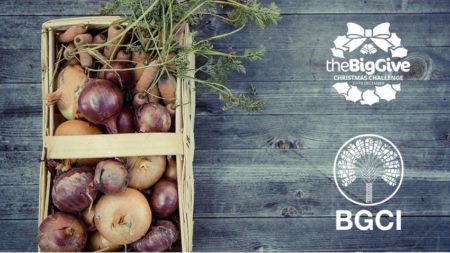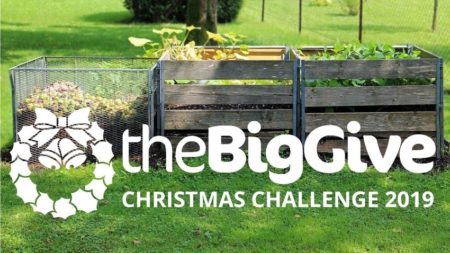- A suite of global accessibility indicators. How long it takes to get from anywhere in the world to settlements of different size. Or took, in 2015.
- A method for computing hourly, historical, terrain‐corrected microclimate anywhere on Earth. Why you might want to move in the first place.
- Genetic strategies for improving crop yields. “Valuable genetic diversity for increasing crop resilience resides in cultivated landraces, heirloom varieties and the wild relatives of crops.”
- A low-cost aeroponic phenotyping system for storage root development: unravelling the below-ground secrets of cassava (Manihot esculenta). But sometimes you have to work hard to get at it: case in point.
- High SNP diversity in the non-toxic indigenous Jatropha curcas germplasm widens the potential of this upcoming major biofuel crop species. And here’s another.
- Genome-wide variation patterns between landraces and cultivars uncover divergent selection during modern wheat breeding. In China and Pakistan anyway.
- Plant populations of three threatened species experience rapid evolution under ex situ cultivation. So don’t cultivate, store seeds instead. Or as well.
- Genes derived from ancient polyploidy have higher genetic diversity and are associated with domestication in Brassica rapa. Polyploidy pre-adapts plants for domestication.
- Genome duplication effects on functional traits and fitness are genetic context and species dependent: studies of synthetic polyploid Fragaria. Case in point.
- A mutualistic interaction between Streptomyces bacteria, strawberry plants and pollinating bees. The rhizosphere protects.
- Do selfing species have greater niche breadth? Support from ecological niche modeling. Yes indeed.
- Modelled distributions and conservation status of the wild relatives of chile peppers (Capsicum L.). 50% are high priority for conservation. No word on their mating systems.
- Construction of a core collection of eggplant (Solanum melongena L.) based on genome-wide SNP and SSR genotypes. From 893 to 100, in 4 geographical clusters.
- A taxonomic monograph of Ipomoea integrated across phylogenetic scales. A whole bunch of new species, and evidence that some 60 species independently developed storage roots before humans were even around. Yes, even sweetpotato.
- Supermarket food purchases and child nutrition in Kenya. Not a bad thing.
Support BCGI’s Global Botanic Garden Fund
Botanic Gardens have long been centres of excellence for plant conservation and many are experts in sustainable practices. This project aims to support smaller botanic gardens that don’t have the expertise or infrastructure required to adopt sustainable practices in saving water, energy, and food.

A very worthy cause.

Nibbles: Writing rules, CWR project, Foxes, Agrodealers, Etruscan diet
- Science writing 101.
- Science writing about crop wild relatives collecting.
- The animal domestication syndrome may not be a thing.
- The last rural mile: a survey of agrodealers in E. Africa.
- Eat like an Etruscan.
Brainfood: Cassava diversity, Landrace diversity double, Soybean oil quality, Cucurbit domestication, Carrot colours, Pharaonic emmer, Teosinte RILs, Chinese pigs, Brazilian apples, Teosinte diversity, Forests & diets, Forest productivity, Agricultural productivity
- A global overview of cassava genetic diversity. The African germplasm is different from the Latin American, but not by that much.
- Genetic variability in landraces populations and the risk to lose genetic variation. The example of landrace ‘Kyperounda’ and its implications for ex situ conservation. Better genetically to conserve landraces as sub-lines. But financially?
- Impact of merging commercial breeding lines on the genetic diversity of Landrace pigs. Above goes for pigs too.
- Selection and Molecular Characterization of Soybeans with High Oleic Acid from Plant Germplasm of Genebank. 3 accessions have interesting variants in the relevant gene.
- Origin and domestication of Cucurbitaceae crops: insights from phylogenies, genomics and archaeology. Lots of different paths to domestication, but all involve loss of flesh bitterness, one way or another.
- Changing Carrot Color: Insertions in DcMYB7 Alter the Regulation of Anthocyanin Biosynthesis and Modification. How the carrot lost its purple.
- A 3,000-year-old Egyptian emmer wheat genome reveals dispersal and domestication history. Most closely resembles modern material from Turkey, Oman and India.
- TeoNAM: A Nested Association Mapping Population for Domestication and Agronomic Trait Analysis in Maize. With added teosinte goodness.
- Adaptive phenotypic divergence in an annual grass differs across biotic contexts. The rhizosphere affects adaptation of teosinte along an altitudinal gradient. We’ll need a Nested Association Mapping Population for that too now, no doubt.
- Population genetics assessment model reveals priority protection of genetic resources in native pig breeds in China. Most breeds have low diversity; Tibetan pigs are an exception.
- A brief history of the forty-five years of the E’AppleBP apple breeding program in Brazil. 27 new varieties seems like pretty good going.
- Testing the Various Pathways Linking Forest Cover to Dietary Diversity in Tropical Landscapes. Sometimes there’s a direct pathway (e.g., consumption of forest food), sometimes an income pathway (income from forest products used to purchase food from markets), and sometimes an agroecological pathway (forests and trees sustaining farm production). And sometimes there isn’t.
- Evolutionary diversity is associated with wood productivity in Amazonian forests. “…greater phylogenetic diversity translates into higher levels of ecosystem function.” No word on its effect on diets.
- Anatomy and resilience of the global production ecosystem. Plenty of words on its effect on diets.
PGR training needs identified
There’s an open access Crop Science Special Issue out under the title: Connecting Agriculture, Public Gardens and Science. Well worth having a look at. There’s great stuff on crop wild relatives, plant awareness, chefs, and trans-situ conservation, just to give you a flavour. There’s also a summary of the symposium that gave rise to the special issue. Our friend Colin Khoury was closely involved.
I’ll just highlight here the paper by Gayle Volk and others on training needs in plant genetic resources conservation. 1 The authors sent out a survey and analyzed the feedback from 425 respondents by type of institution: academia, NPGS, CGIAR, national genebanks, NGOs and the private sector. There were, fortunately, some topics which a majority across all institutions considered high priority areas for training:
- accessing information
- crop wild relatives
- genotyping
- phenotyping
- intellectual property and regulatory issues
But there were also some differences.
The respondents from academia were also interested … in prebreeding, which is not surprising because many of these respondents were plant breeders. Respondents from the private sector were also interested … in requests/distributions and prebreeding, and respondents from NGOs were also interested … in collection gap analyses, explorations, germplasm preservation, intellectual property, and regulations. The genebank respondents (NPGS, CGIAR, non-NPGS government) considered germplasm preservation, intellectual property, and general concepts in plant genetic diversity as priority topics. These differences among the institutional types are not surprising due to their different missions.
This all came out of an initiative from the NPGS that started back in early 2018. Training materials of various types are being developed. Will keep you posted.